by Francis Hriadil
One of the most prominent and recognizable aspects of Baguazhang (八卦掌, bāguàzhǎng) practice is Circle Walking. It forms a fundamental part of Bagua methodology and training. Why does Bagua have Circle Walking? Why do Bagua practitioners do this? Do we do it because it looks good? Do we do it because our teacher says we have to, because “that is what Bagua is”? Do we do it because we’re crazy? Some people, who don’t understand Bagua, may think so.
Why a circle? First, it is important to understand that the “circle principle” comes from nature. It is not an invention of man. It is a universal and fundamental principle of the natural world, and has become recognized as such in such famous ancient Chinese texts as the YIJING, (易經, Yìjīng) – The Book of Changes. All nature, and all life, is based on change – circular and cyclical change. All motion incorporates circular or curvi-linear movement. All joints operate on circular or rotational action. And, to turn the body or change direction, one must perform circular / rotational changes.
On a large scale, the Earth spins on its axis. The Moon revolves around the Earth. The Earth and the planets revolve around the Sun. And, so on.

This is the basis for all life, for all of nature, for the universe, and all of existence.
The rule of nature is that everything changes; nothing remains the same. Change can be fast or slow, large or small. In any case, change is natural and inevitable, and is a continuous and on-going process. Nevertheless, change is not haphazard. There are patterns of change inherent in nature and in human life. The Gua (卦,guà) – the Trigrams that comprise the symbol for Baguazhang recognize and codify these naturally occurring processes in a systematic way.
Baguazhang (八卦掌, bāguàzhǎng) incorporates circle thinking, circle moving, and circle fighting as the basis of its methodology. Taijiquan (太極拳, tàijíquán) the oldest of the major internal systems, emphasizes the principle of Yin (陰, yīn)and Yang (陽, yáng). Xingyiquan (形意拳, xíngyìquán), the second major internal system, emphasizes the principle of the Wuxing (五行, wǔxíng) – the Five Elements. Baguazhang (八卦掌, bāguàzhǎng), the youngest of the major internal systems, incorporates the principles of Yin (陰, yīn) and Yang (陽, yáng), Wuxing (五行, wǔxíng), and emphasizes the principle of continuous, circular change (八卦, bāguà) (圈法, quānfǎ). Practiced the traditional way, Bagua is unique in this regard. Traditional Baguazhang views these three fundamental natural principles as a complete trinity combination.
Baguazhang manifests Yin and Yang throughout its methodology. Fundamentally, Traditional Bagua, such as the traditional method of Lu Shui-Tian as taught by Shifu Park Bok-Nam, recognizes and trains both:
- the Yin Way (陰法, yīnfǎ) – the Health or Qigong (氣功, qìgōng) Way
- and, the Yang Way (陽法, yángfǎ) – the Fighting Way.
Each way is different; but, they are both related, and depend on each other. Both ways are necessary to achieve complete, natural balance in the body.
Health Way
The body is composed of approximately 360 joints and 650 muscles in the body. These 360 joints control the body’s 650 muscles. Each joint and muscle needs to be properly exercised through its full range of motion to achieve balance in the body, and obtain optimal health. Traditional Bagua uses Circle Walking to exercise the body completely, through many different circle ways, and angle ways, to address the needs of all of the body’s joints and muscles.
This is very different than popular exercises like swimming, or walking, or running, which are unchanging and highly repetitive linear activities that utilize only a small subset of the body’s joints and muscles. Few, if any, of the body’s joints and muscles are exercised through their full range of motion in these types of linear exercises. Traditional Bagua, on the other hand, uses many different circles,

and various circle patterns. Each Circle Walking way and pattern has its own special attributes and purpose. The specifics of what, when, how, and why we use and do each way are beyond the scope of a short introductory article such as this. However, it can be stated that each circle way develops the body differently, exercises the body’s knees and other joints differently, and produces different muscle, ligament, and tendon development.
Furthermore, with proper posture, rhythm, breathing, etc., Circle Walking produces continuous Power Circulation of Xue (血, xuè) – “Blood” and Qi (氣, qì) throughout the entire body, both the upper body and the lower body. Ancient Chinese internal and health practitioners have recognized that the key to optimal health lies in the circulation.
Good Health = Good QI (氣, qì) Circulation + Good Xue (血, xuè) / “Blood” Circulation
This all comes from the continuous Power Circulation that results from proper Circle Walking practice.
Fighting / Self-defense Way
Circle Walking uses different circles, different angles, different directions to train the Bagua practitioner how to keep moving. Through Circle Walking, practitioners develop the ability to evade, maneuver, and confuse their opponent(s). Opponent(s) never know when or how a Bagua fighter will move or change direction, what targets will be attacked, what direction an attack will come from, or what techniques will be used to defend or attack. It also serves as a jab to get an opponent to react or commit, thereby opening his/her “door” for the Bagua fighter to step in, strike, and end the fight.
And, the continuous Power Circulation created through Circle Walking practice prepares the Bagua fighter so that when he/she is ready to strike, his/her Qi will be ready to come out in that strike, to devastating effect on the opponent.
When you look at how animals fight in nature, you see few predators that attack straight on. Many use surprise and maneuver to gain the advantage, to maximize their attack and prevent any harm to themselves. Foxes, for example, circle their prey before pouncing from the side or from the rear. Lions almost never attack straight on. They normally move alongside their prey and turn into the prey very sharply to attack, with a deadly strike.
And, Traditional Baguazhang is not a sport. It is a serious self-defense art. Every vulnerable point on the body is a valid target. There are no illegal targets in Traditional Bagua.
This is the way of Bagua fighting. Traditional Baguazhang provides the Bagua fighter with the ability to evade, maneuver, and attack in an unpredictable manner, and to employ Internal Power, at any time, and in any direction. This all comes from proper Circle Walking practice. Traditional Baguazhang is unique in this regard. It is a comprehensive martial art based on natural principles, that when practiced and used properly, produces a very efficient, effective, and devastating fighting method.
This kind of skill does not come overnight. It requires time, dedication, serious commitment, discipline, and patience. And, it requires the guidance of a properly trained and experienced instructor, who can provide the student with the detail and depth of understanding that is needed to excel in this comprehensive martial art. For those interested in exploring this art further, you can contact Shifu Park’s Qiang Shan Baguazhang Association and certified instructors at http://www.pa-kua.com and https://ba-gua.org/ .
It comes down to what you are looking for in any health practice, exercise practice, or martial practice that you are involved in, or are considering. This is a personal decision that only you can make. Traditional Baguazhang has many unrivaled benefits to offer. Whatever your decision, I wish you well in your life and in your practice.

